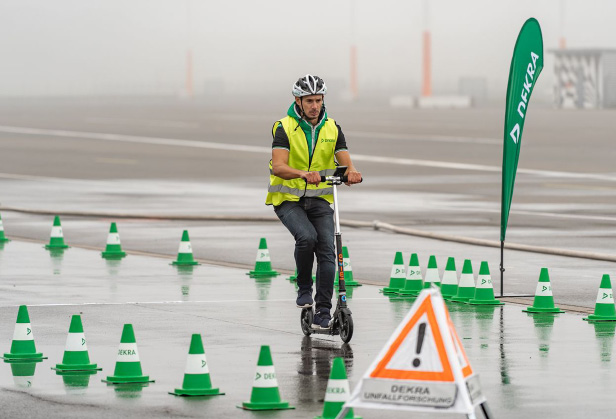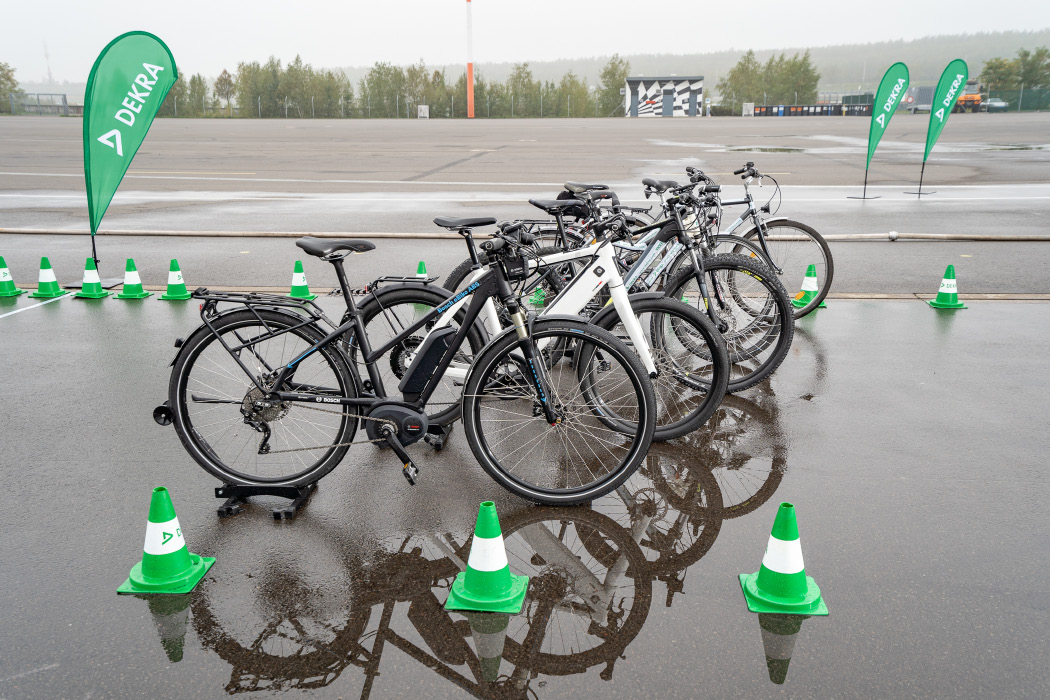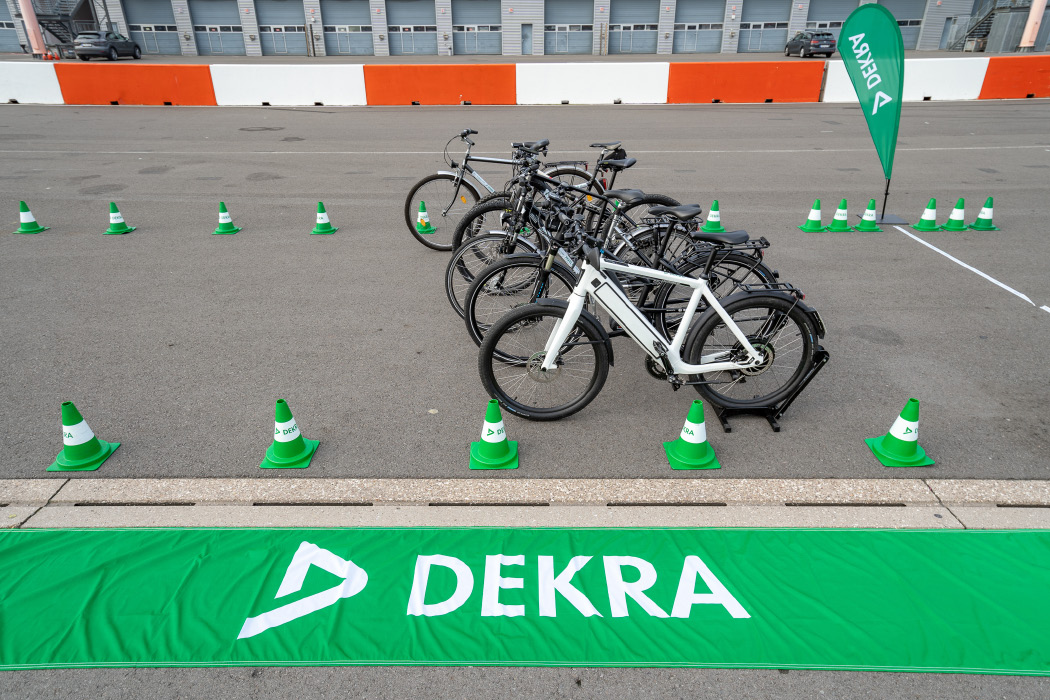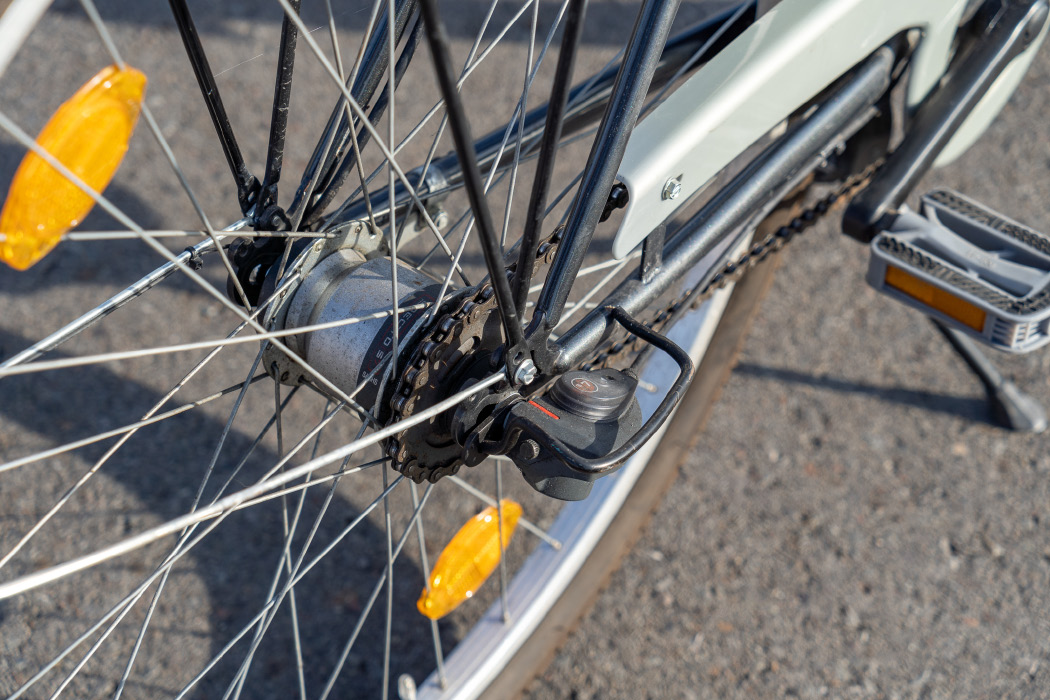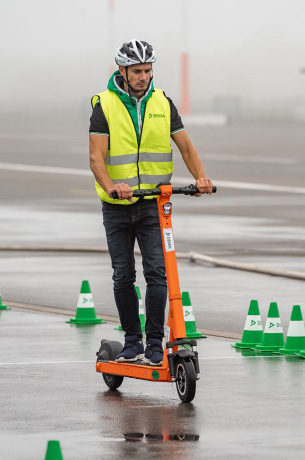Added Value for Safe Road Use
Careful and considerate behavior that respects the rules of the road is essential in reducing accident numbers. In addition to this, users of two-wheeled vehicles in particular can prevent accidents completely, or at least lessen the severity of their consequences, by keeping their vehicles – especially their brakes and lights – in good technical condition, wearing properly fitted helmets, and using active safety systems.
No matter what form of transport you choose, the braking distance is often the deciding factor in whether or not an accident occurs – and whether it results in minor, severe, or even fatal injuries if it does. This applies especially to unprotected road users such as cyclists. Among other things, the various European standards that govern safety requirements and test procedures for bicycles focus on well-modulated braking power that, regardless of the conditions, enables both cyclist and bicycle to be slowed down or brought to a stop according to the situation at hand. Bicycle brakes also need to reliably guarantee steady deceleration, even in wet conditions.In Germany, for example, Section 65 of the Road Traffic Permit Act (StVZO) states that all bicycles must have two independently functioning brakes. The design and character of the brakes are not important as long as they are permanently in-stalled on the vehicle and enable the rider to adequately reduce the speed of the bicycle and hold it in place. Similar regulations apply to e-scooters.
GOOD BRAKES ARE THE MOST IMPORTANT FACTOR IN ENSURING SAFE CYCLING.
But what is the situation with regard to the braking power of modern bicycles, pedelecs, and speed pedelecs? DEKRA conducted brake tests at its Technolo-gy Center at the DEKRA Lausitzring race track in Klettwitz, Germany, to find out. Up until the test, the six test bicycles had been subjected to everyday use. No changes were made to their technical condition before conducting the tests. The test team simply checked the tire pressure and adjusted it where necessary. They also checked that the braking systems were in good condition and fully functional.
When selecting the test bicycles, care was taken to ensure that they all had a similar tire contact area. This made mountain, touring, and trekking bikes particularly well suited to the test. “Fat bikes” and road bikes were not included in the test. The objective of the brake tests was to demonstrate the differences in the braking power of different brake systems, to illustrate the effects of different weather conditions (dry/wet road surfaces), and to highlight the specific advantages and disadvantages of each brake system. The following systems were installed on the test bicycles:
- City bike: Caliper brake at front/ coaster brake at rear
- Trekking bike:Caliper brake at front/ caliper brake at rear
- Mountain bike 1: Caliper brake at front/ caliper brake at rear
- Mountain bike 2:Disc brake at front/ disc brake at rear
- Speed pedelec:Disc brake at front/ disc brake at rearPedelec: Disc brake with Bosch ABS at front/ disc brake at rear
- Pedelec: Disc brake with Bosch ABS at front/ disc brake at rear
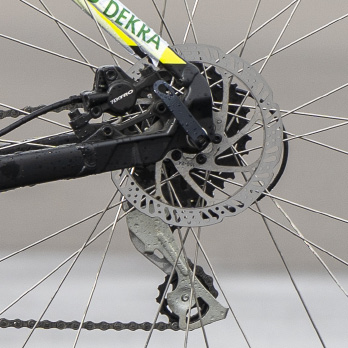
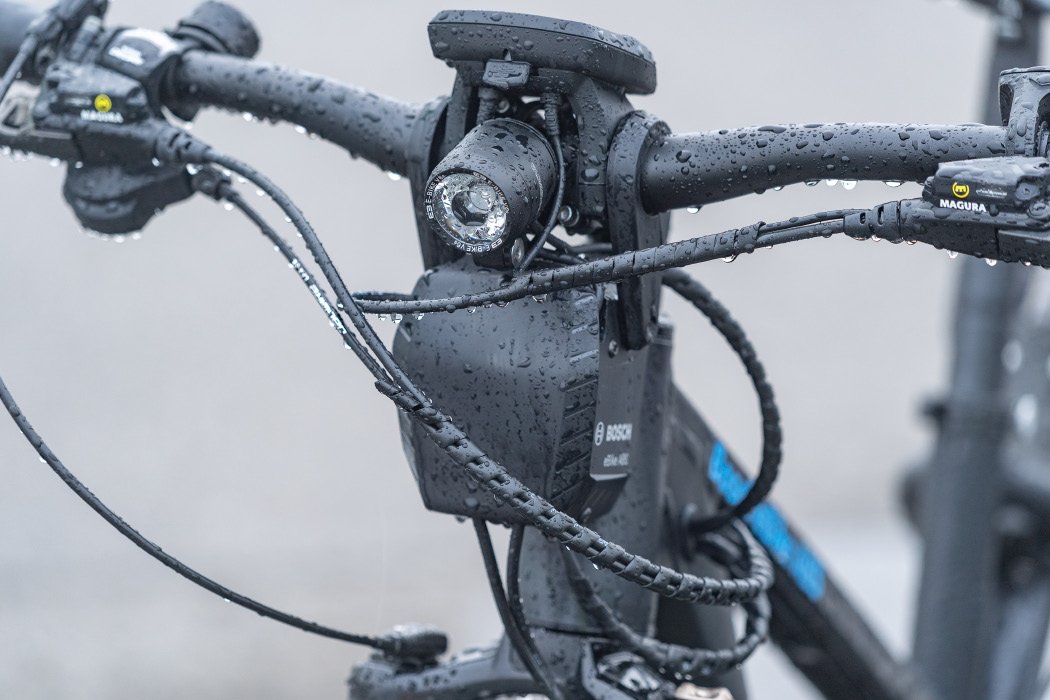
Pedelec ABS provides significant advantages on wet surfaces
The test scenario required the testing rider to carry out multiple braking procedures on each of the test bicycles, both on a surface with a high adhesion co-efficient (dry) and on a surface with a reduced ad-hesion coefficient (wet). All the braking procedures were initiated at a speed of 25 km/h with the maximum deceleration possible, by an experienced test rider. For the wet-surface braking procedures, large quantities of water were applied to the entire run-up and travel surface, the braking area, and the test bi-cycles and their braking systems. The measurements were taken using a tape measure, and the measuring point was the axle of the front wheel. The tests produced the following results:
The disc brakes demonstrated good modulation overall. On the dry surface, all the test bicycles demonstrated appropriate braking power; there was no significant drop-off in any of the braking systems. The longest braking distance on the dry surface was recorded by the bicycle with the caliper brake at the front and the coaster brake at the rear. The mean braking distance for this bicycle was 4.55 meters. The speed pedelec recorded the shortest mean braking distance on the dry surface, with 3.66 me-ters. The difference between the shortest and longest mean braking distances on the dry surface was thus 89 centimeters.
On the wet surface, however, the differences were much more stark: In this scenario, the braking distance increased by over 20 percent for all of the test bicycles except the pedelec with ABS. The biggest difference was recorded for the test bicycles with caliper brakes at the front and rear. The braking distance for these bicycles increased by almost 30 percent on the wet surface. Overall, the ABS brake on the pedelec demonstrated the best performance on the wet surface, recording a braking distance that was only just under ten percent longer than its braking distance on the dry surface. On the wet surface, the longest braking distance was again recorded by the bicycle with the caliper brake at the front and the coaster brake at the rear. The mean braking distance for this bicycle was 5.53 meters. The pedelec with ABS recorded the shortest mean braking distance on the wet surface, with 4.15 me-ters. The difference between the shortest and longest braking distances on the wet surface was 1.38 meters.
Deceleration values of between 5.3 and 6.6 m/s² were achieved during the braking procedures conducted in dry conditions, while the deceleration values in wet conditions were between 4.4 and 5.8 m/s². As such, all the bicycles achieved the min-imum deceleration for motor vehicles of 5.0 m/s2 in the dry braking test. One model even exceeded this value on the wet surface: The ABS bicycle achieved a mean fully developed deceleration of 5.8 m/s².
Braking comparison: E-scooters versus push scooters
Using the same test setup, the DEKRA experts also conducted brake tests on a conventional push scooter equipped with just a foot brake on the rear wheel, and an e-scooter. The e-scooter was a standard model with drum brakes that is available for rental in many German cities. On this model, both the front and the rear brakes were operated by separate brake levers on the handlebars. The brake tests were conducted at a speed of 20 km/h.
The results were as follows: In the brake tests on the dry surface, the push scooter recorded a mean braking distance of 9.70 meters, which is equivalent to a deceleration of 1.6 m/s2. The push scooter’s braking performance was alarmingly poor compared to that of the e-scooter, which recorded a mean braking distance of just over 3.37 meters on the dry surface, equivalent to a deceleration of 4.6 m/s2. The differences were even starker on the wet surface and with a wet rear brake. While the e-scooter braked with almost exactly the same effectiveness in these conditions, the foot brake on the push scooter had almost zero braking effect – the push scooter’s mean braking distance doubled to 19.25 meters, equivalent to a deceleration of just about 0.8 m/s2. In light of this, it is recommended that push scooter riders place one foot on the asphalt to brake under these conditions. When using this type of manual braking, the push scooter achieved braking distances of 9.10 meters on the wet surface. Nevertheless, the use of push scooters that are equipped with only a foot brake should be avoided on damp and wet surfaces. It should be noted that the e-scooter’s brakes produced positive results. It was possible to exert the maximum pressure on both brake levers without any cause for concern. The braking procedures were steady and gave the rider a sense of safety.
